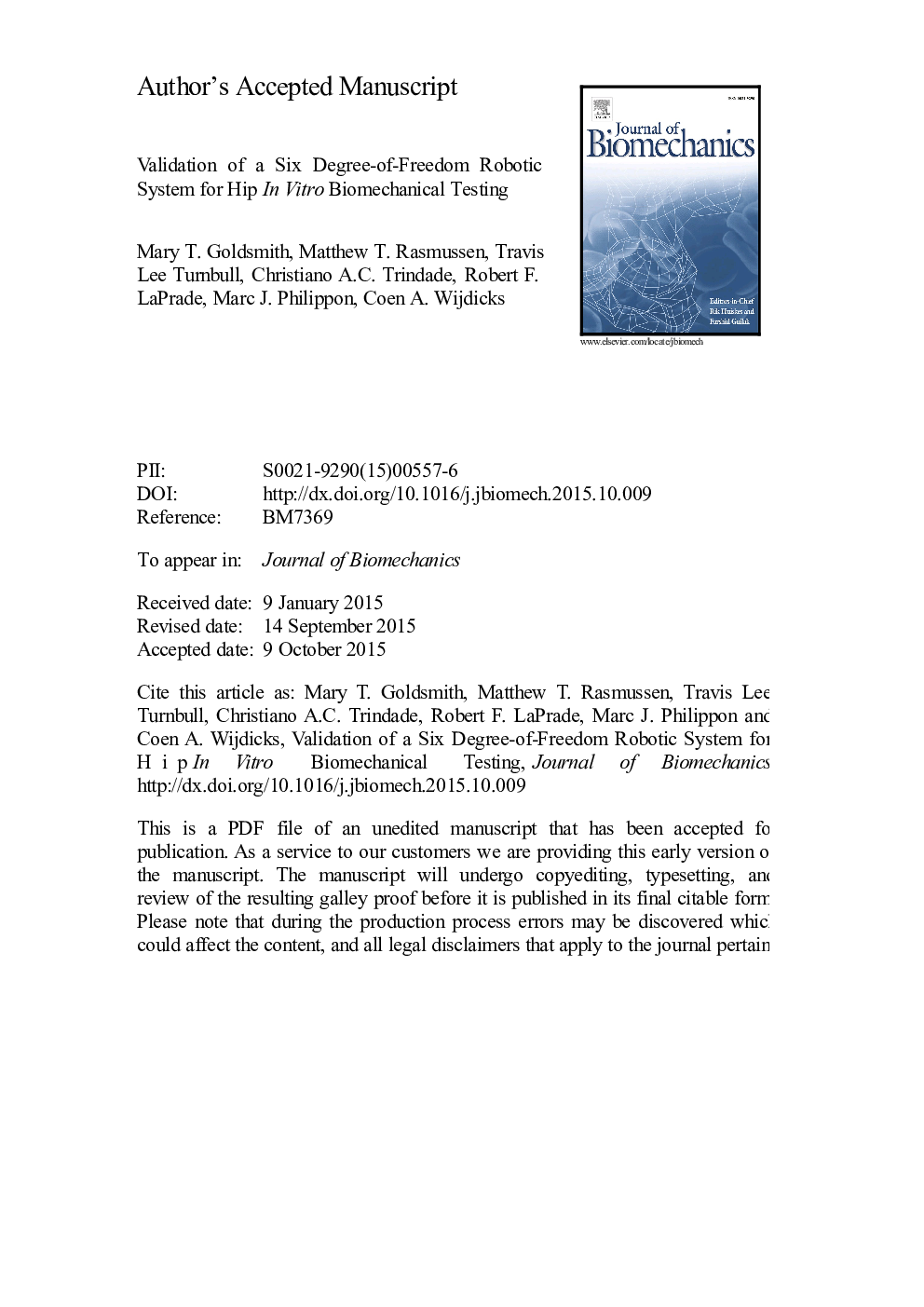| Article ID | Journal | Published Year | Pages | File Type |
|---|---|---|---|---|
| 10431245 | Journal of Biomechanics | 2015 | 30 Pages |
Abstract
Currently, there exists a need for a more thorough understanding of native hip joint kinematics to improve the understanding of pathological conditions, injury mechanisms, and surgical interventions. A biomechanical testing system able to accomplish multiple degree-of-freedom (DOF) movements is required to study the complex articulation of the hip joint. Therefore, the purpose of this study was to assess the repeatability and comparative accuracy of a 6 DOF robotic system as a testing platform for range of motion in vitro hip biomechanical analysis. Intact human cadaveric pelvises, complete with full femurs, were prepared, and a coordinate measuring machine collected measurements of pertinent femoral and pelvic bony landmarks used to define the anatomic hip axes. Passive flexion/extension path and simulated clinical exam kinematics were recorded using a 6 DOF robotic system. The results of this study demonstrate that the 6 DOF robotic system was able to identify hip passive paths in a highly repeatable manner (median RMS error of <0.1 mm and <0.4°), and the robotically simulated clinical exams were consistent and repeatable (rotational RMS error â¤0.8°) in determining hip ranges of motion. Thus, a 6 DOF robotic system is a valuable and effective tool for range of motion in vitro hip biomechanical analysis.
Keywords
Related Topics
Physical Sciences and Engineering
Engineering
Biomedical Engineering
Authors
Mary T. Goldsmith, Matthew T. Rasmussen, Travis Lee Turnbull, Christiano A.C. Trindade, Robert F. LaPrade, Marc J. Philippon, Coen A. Wijdicks,
